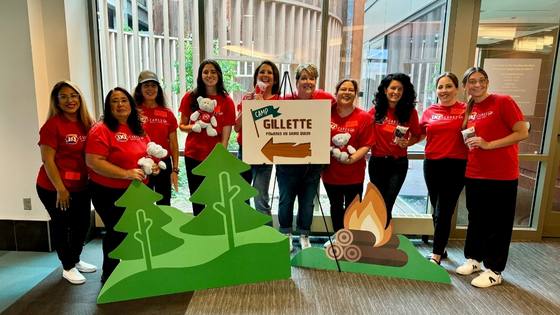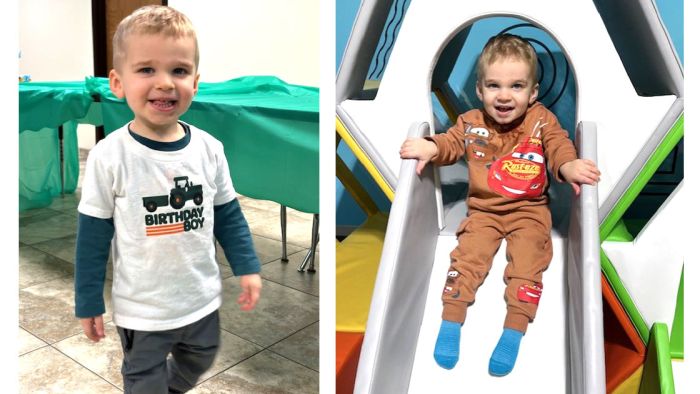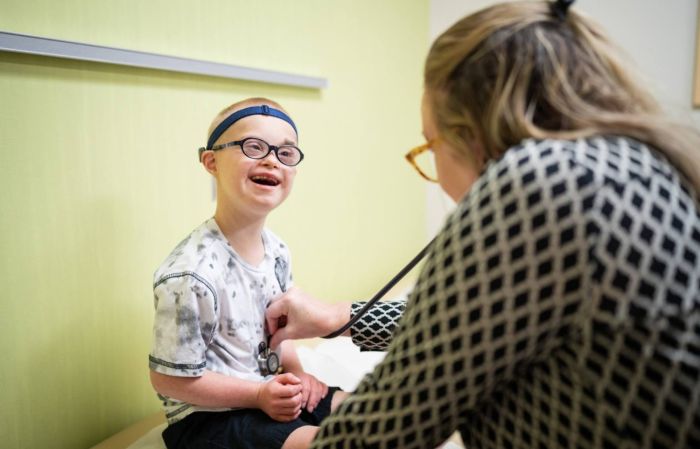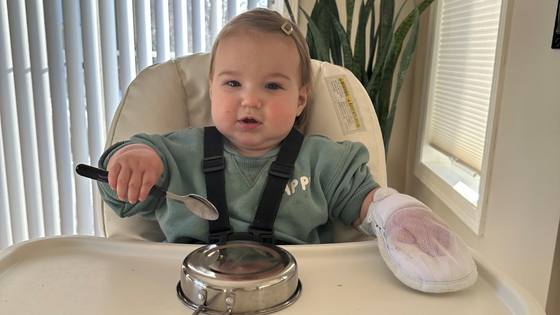Gillette Stories
Gillette Stories
At Gillette Children's we help every child in our care live a life defined by dreams, not diagnosis. Here you will find stories of inspiration and triumph and joy. Learn more about our work with patients and families that don't give up as we help every child live their story. Gillette Stories Magazine


Our Team
Gillette After Dark: Shining a Light on Evening and Night Shift Staff
May 7, 2025Exterior of Gillette Children's hospital at dusk.
Read More
Philanthropy
A Patient Journey Comes Full Circle
April 1, 2025Former patient Elizabeth Lilley returned to Gillette 20 years later as a volunteer with Dairy Queen.
Read More
Philanthropy
Meet Jessie’s Club Ambassador Carter Mulvey
March 26, 2025Through expert care from his Gillette Children's care team, support from his family, and a lot of determination, Carter has made huge strides with his mobility.
Read More
Philanthropy
Meet Gillette Children’s Jessie’s Club Ambassador Adelynn McCoy
March 25, 2025Adelynn McCoy with KS95 Morning Show hosts at the 2024 KS95 for Kids Radiothon benefitting Gillette Children's and the M Health Fairview Masonic Children's Hospital Cancer Program.
Read More
Down Syndrome
Down Syndrome and Healthcare: Your Questions, Answered
March 20, 2025Get answers to common questions about the kind of medical care that children with Down syndrome often need.
Read More
Innovation and Research
Gait and Motion Analysis Makes Gillette a Top Center for Cerebral Palsy Care
March 20, 2025 Read More
Innovation and Research
Transforming Outcomes for Hemiplegic Cerebral Palsy
March 15, 2025Gillette Children's study examines the use of Infant Constraint Induced Movement Therapy to improve outcomes for children with hemiplegic cerebral palsy.
Read More
Cerebral Palsy
Expanding Cerebral Palsy Knowledge with Three New Books
March 11, 2025With more than a century of unwavering commitment and expertise in cerebral palsy care, Gillette Children’s—through our Cerebral Palsy Institute—is a global leader in clinical excellence, pioneering research, and advocacy. In December 2024, we reached a new milestone with the release of three books as part of the Gillette Children's Healthcare Series, each focusing on a different type of cerebral palsy: Spastic Hemiplegia, Spastic Quadriplegia, Spastic Diplegia, second edition
Read More
Cerebral Palsy
Developmental Evaluation Clinic Provides a Powerful Team of Experts
March 7, 2025Gillette Children’s has a new Developmental Evaluation Clinic to help answer parents’ questions about their child’s growth and development.
Read MoreGet Gillette Stories in your inbox!
Stay “in the know” with our Gillette Stories! Receive the latest stories and news from Gillette delivered straight to your inbox..
Gillette Stories Magazine
Find out moreHealth Library
Find education related to your condition, procedure, care at home, and more.
Search Health LibraryResearch
Gillette Research aims to improve treatment options for children who have disabilities.
Explore Gillette ResearchNews
From innovations to innovators, Gillette Children’s shares our news as leaders in specialty care and research.
News Releases Home Page
Home Page
